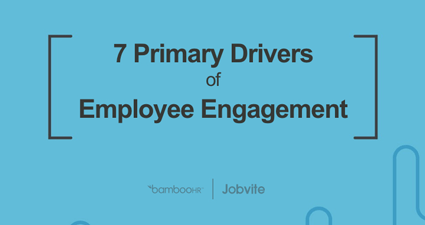Family and Medical Leave Act (FMLA)
What Is the Family and Medical Leave Act of 1993?
The Family and Medical Leave Act of 1993, or FMLA, is a law requiring businesses to grant employees a specified amount of leave every year for health and family reasons. Under this law, the employee’s livelihood is protected, which means they don’t risk losing their job for taking qualified time off.
The Family and Medical Leave Act was instituted on February 5, 1993. The bill was signed into law by President Bill Clinton on this day and took effect on August 5, 1993. Since then, the government has added several amendments to clarify the definition of family members and expand coverage under the act.
How Long Is FMLA Leave?
Eligible employees can take up to 12 workweeks of FMLA-protected leave in a 12-month period for a variety of reasons, including:
- Giving birth to a child
- Adopting a child
- Becoming a foster parent
- Receiving treatment for a mental or physical health condition
- Caring for a family member with a mental or physical health condition
- Reasons related to spousal, parental, or child military foreign deployment
Alternatively, eligible employees may take up to 26 workweeks off to care for a covered military service member in the family with a serious health condition.
Is FMLA Paid?
FMLA is different from other PTO policies and only guarantees unpaid leave. However, you’re required to continue the employee’s healthcare coverage while they’re out and ensure they have a job to come back to when they return. You must reserve the employee’s current position or a similar one with the same salary and benefits.
To help employees financially, PTO can be used for FMLA-covered reasons. This means employees can count regular paid sick, vacation, and family time off as part of a protected absence. Doing so may be voluntary or required depending on your company’s time-off policy.
FMLA Eligibility
The law outlines eligibility requirements for both employees and employers. Special rules apply to teachers and airline flight crews, but most employees are eligible for FMLA if they meet all the following criteria:
- They work for an FMLA-covered employer.
- They’ve worked for their employer for at least 12 months (consecutively or not).
- They’ve worked at least 1,250 hours for the company in the 12 months before taking leave.
An FMLA-covered employer is a company in one of the following categories:
- A private business with at least 50 employees employed for at least 20 workweeks during the current or last calendar year
- A public or private elementary or secondary school
- A local, state, or federal government agency
Only companies with 50 or more employees within 75 miles of the company’s main work site must offer FMLA leave. The law only applies to immediate family, such as parents, spouses, and children, but includes next of kin and adult children. It also applies to those in same-sex and common-law marriages.
Taking FMLA a step further, many states have enacted leave policies that expand upon the federal standard in other ways.
Intermittent FMLA
Employees don’t have to take FMLA-covered leave all at once—they can take it intermittently. Employees may reduce their daily or weekly schedule or take protected leave in intervals for a single health-related reason. However, the employee must obtain their employer’s approval to take intermittent FMLA-covered leave to bond with a newborn or child. In this case, any leave must conclude within 12 months after childbirth or foster/adoptive placement.
How to Apply for FMLA
To take leave under FMLA, most employees follow their company’s usual PTO request process. You may also ask them to complete an FMLA form. Here’s a general breakdown of how a typical leave request may work:
- Give advance notice. Employees should give you at least 30 days’ notice. If this isn’t possible due to an emergency, they must request leave as soon as they can.
- Provide sufficient reason. Employees don’t have to share sensitive medical information, but they’ll need to provide enough detail for you to determine if their reason is covered by the FMLA.
- Submit certification. Some employers require documentation to support FMLA requests. Employees have 15 calendar days to obtain certification.
- Communicate changes. If approved, employees should keep you informed if their condition changes and they need to adjust their absence.
As an employer, you’re obligated to take the following actions:
- Inform employees about their FMLA rights and responsibilities.
- Advise employees on the certification process, if it’s required at your company.
- Let employees know if they’re eligible for FMLA within five business days of their initial request or certification submission.
What If an Employee Isn't Eligible for FMLA?
If an employee is ineligible, employers must let them know that any leave they take is not FMLA-protected. This means you don’t have to keep their job open for their return or continue their health coverage, but you can voluntarily. They may request FMLA leave again if their eligibility changes down the road.
Keep in mind that they may still be eligible for leave under other legal provisions. Many state and local laws accommodate medical leave. Also, you can help them navigate absences through your own PTO policy and other arrangements. Some companies integrate leave policies that support workers who aren’t eligible for FMLA as part of their benefits package.
FMLA Paperwork
Employers are responsible for maintaining diligent records about covered leave and keeping them for at least three years. These records don’t have to be submitted to the US Department of Labor unless specifically requested. You may craft your own FMLA forms for your organization or use the customizable forms provided by the Department of Labor:
Notice forms:
Certification forms for healthcare providers:
- Form WH-380-E, Certification of Healthcare Provider for Employee’s Serious Health Condition
- Form WH-380-F, Certification of Healthcare Provider for Family Member’s Serious Health Condition
Certification forms for military family leave:
- Form WH-384, Certification for Military Family Leave for Qualifying Exigency
- Form WH-385, Certification for Military Caregiver Leave of a Current Servicemember
- Form WH-385-V, Certification for Military Caregiver Leave of a Veteran
FMLA Violations by Employers: Know the Risks
Employers should be careful to fully understand the law. If employees feel their rights have been violated, they can file a complaint with the DOL’s Wage and Hour Division or seek legal action. Examples of FMLA violations include:
- Denying promotions, bonuses, and other rewards for taking FMLA leave
- Firing, suspending, or otherwise punishing employees for requesting/using FMLA leave
- Reducing the number of shifts the employee typically works for their absence
- Issuing negative performance evaluations for taking leave
- Discontinuing employee or dependant health coverage during leave
- Failing to inform the employee of their FMLA rights and responsibilities
- Pressuring employees to return from job-protected leave sooner than planned
While tricky, an employer may lay off an employee while on FMLA leave. This may occur if the employee committed fraud or their work conduct before taking time off warranted this action. Generally, employers must be careful to provide sound evidence that they would have let the employee go whether or not they took an FMLA-eligible absence.

Companies with engaged workforces vastly outperform those without. What prevents us from engaging employees, and are there prhitical solutions to improve engagement?

The most successful individuals, teams, and organizations set clear goals to reach success. Goals help us achieve more, faster, with less. In the end, the benefits of goal setting lead to one outcome: better employee performance.